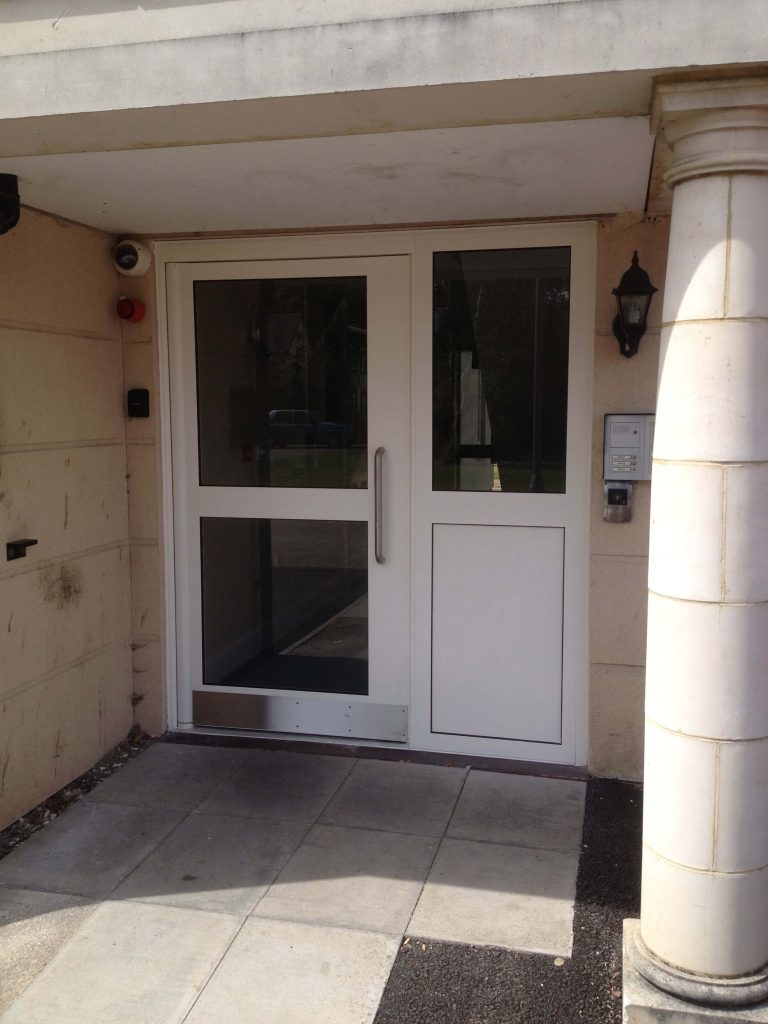Introduction
Hospital doors play a crucial role in ensuring the safety and security of patients, staff, and visitors within healthcare facilities. Beyond mere entryways, these doors are designed to meet stringent safety standards, facilitate smooth operations, and provide essential security features that protect against unauthorized access and potential hazards. This article explores the significance of hospital doors in maintaining a safe environment, the types of doors commonly used, and the security measures integrated into their design.
Importance of Hospital Doors
Hospital doors serve multiple critical functions beyond basic access control. They are designed to manage traffic flow efficiently, ensuring that patients, medical personnel, and supplies can move throughout the facility without hindrance. Moreover, hospital doors contribute to infection control by minimizing the spread of contaminants and maintaining sterile environments, particularly in areas such as operating rooms and isolation wards.
Types of Hospital Doors
- Swing Doors: These are the most common type of hospital doors, typically used in corridors, patient rooms, and administrative areas. They provide easy access and are equipped with features such as automatic opening mechanisms for hands-free operation, crucial in healthcare settings where hygiene is paramount.
- Sliding Doors: Often found in high-traffic areas like emergency departments and main entrances, sliding doors offer efficient space utilization and quick access. They are designed to open and close smoothly to accommodate stretchers, wheelchairs, and large medical equipment.
- Specialized Doors: Certain hospital areas require specialized doors tailored to specific needs:
- Fire-rated Doors: Essential for fire safety, these doors are designed to withstand fire for a specified duration, preventing the spread of flames and smoke.
- Radiation Shielding Doors: Found in radiology departments, these doors contain lead lining to protect against radiation exposure.
- Soundproof/Acoustic Doors: Used in areas requiring noise reduction, such as patient rooms and testing facilities, these doors ensure privacy and minimize disturbance.
Security Measures Integrated into Hospital Doors
Ensuring the security of patients, staff, and sensitive medical information is paramount in healthcare facilities. Hospital doors incorporate several security features to achieve this:
- Access Control Systems: Modern hospital doors are often integrated with electronic access control systems that utilize key cards, biometric scans, or keypad entry to regulate access based on staff credentials and authorized personnel lists.
- Automatic Locking Mechanisms: Some hospital doors are equipped with automatic locking mechanisms that engage during emergencies or under specific security protocols, enhancing facility-wide safety.
- Surveillance Integration: Video surveillance systems are frequently integrated with hospital doors to monitor entry and exit points, enhancing overall security and providing a record of access events.
- Alarm Systems: Doors in critical areas, such as medication storage rooms and restricted zones, may be equipped with alarms that trigger in response to unauthorized access attempts, alerting security personnel promptly.
Design Considerations for Hospital Doors
Several design factors are essential when selecting hospital doors to ensure they meet safety standards and operational requirements:
- Material Durability: Hospital doors must be durable and resistant to wear and tear to withstand frequent use and maintain functionality over time. Materials such as stainless steel and impact-resistant glass are commonly used for their strength and durability.
- Hygiene and Cleanability: Doors in healthcare settings must be easy to clean and disinfect to prevent the spread of infections. Smooth surfaces and non-porous materials facilitate thorough cleaning and maintenance of hygiene standards.
- Ease of Use: Accessibility is crucial in healthcare environments, especially for patients with mobility challenges or medical equipment. Doors should be easy to operate and may include features like wide openings, automatic sensors, and accessible handles.
- Fire and Safety Standards: Compliance with fire safety regulations, such as fire-rated doors and emergency exit requirements, is essential to protect patients and staff in the event of a fire or emergency situation.
Challenges in Hospital Door Management
Despite advancements in door technology and security measures, managing hospital doors effectively poses challenges:
- Integration Complexity: Integrating diverse types of doors (swing, sliding, specialized) with various security systems and operational needs requires careful planning and coordination.
- Maintenance Requirements: Hospital doors require regular maintenance to ensure optimal performance and safety. Scheduled inspections, lubrication of moving parts, and prompt repairs are essential to prevent downtime and ensure reliability.
- Cost Considerations: Implementing high-security features and specialized doors can be costly, requiring healthcare facilities to balance budget constraints with safety and operational needs.
Conclusion
Hospital doors are integral components of healthcare facility infrastructure, serving critical roles in safety, security, and operational efficiency. By understanding the importance of different door types, the integration of security measures, and the design considerations involved, healthcare providers can enhance patient care, protect staff, and maintain regulatory compliance. As technologies and safety standards evolve, ongoing evaluation and adaptation of hospital door systems will continue to play a vital role in ensuring safe and secure healthcare environments.





Comments